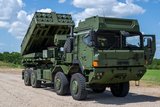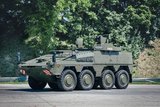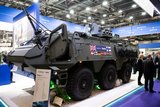EDA launches IED detection programme
The European Defence Agency (EDA) has launched a new research and technology programme aimed at improving member states’ IED detection capabilities.
The IED Detection (IEDDET) programme is being carried out under a three year €14 million project by member states Austria, Belgium, The Netherlands, Poland, along with Norway.
The programme aims to develop, improve and field-test IED detection capabilities in order to better protect troops and increase armed forces’ operational freedom of movement.
Three main projects will be undertaken. The first is the Vehicle Mounted Early Warning of Indirect Indicators of IEDs (VMEWI3), which will focus on the detection of indirect indicators with forward looking camera systems. A technology demonstrator will be based on remotely operated unmanned ground vehicle (UGV) platforms with multi-camera head. The UGV platform will be controlled from a manned vehicle. The aim is to detect indicators of IED presence even while moving with a speed of at least 20-30km/h.
A UGV stand-off multi-sensor platform for IED component detection (MUSICODE) will also be developed to improve stand-off capabilities for detection of IED components by using remotely operated multisensory platforms.
The third project will be the Confirmation, Identification and Airborne Early Warning of IEDs (CONFIDENT). This will focus on the airborne (via UAS) confirmation and the identification of relevant components of IEDs including electronic parts, explosives and chemical, biological, radiological and nuclear payloads prior to the release of the agents; and provide complementary early warning capability.
In order to ensure the coherence and interoperability between the projects, an offline detection map will be produced and shared to best explore the full set of information available for future route clearance operations and the programme will be concluded by a joint demonstration.
Countering IEDs was confirmed as a top priority in the EDA Capability Development Plan revision of 2014.
More from Land Warfare
-
![Croatia orders Leopards and CAESAR howitzers as Lithuania orders more CAESARs]()
Croatia orders Leopards and CAESAR howitzers as Lithuania orders more CAESARs
The Leopard is becoming the tank of choice in central and eastern Europe as Croatia joins Lithuania, the Czech Republic and Hungary in ordering the platform. Lithuania and Croatia have also signed for CAESAR howitzers.
-
![Light Reconnaissance Strike – enabling a vital mission set (Studio)]()
Light Reconnaissance Strike – enabling a vital mission set (Studio)
A new system-of-systems concept will unlock digital integration of sensors and weapons for Light Forces, allowing them to shape the battlefield environment on their own terms and upgrade legacy platforms.
-
![Lockheed Martin to look further afield for GMARS rocket system opportunities]()
Lockheed Martin to look further afield for GMARS rocket system opportunities
The HX truck is already in use in many NATO and allied countries around the world as a logistics vehicle and carrier for high-value systems, including missile firing weapons, so its use for the Global Mobile Artillery Rocket System makes logistical sense.
-
![Lithuanian 1st Division to achieve initial operating capability in 2026]()
Lithuanian 1st Division to achieve initial operating capability in 2026
Lithuania is one of the countries stepping up its defences in the face of the war in Ukraine with a particular focus on its neighbour and Russian ally Belarus, which has been making incursions into Lithuania’s airspace with balloons and drones.
-
![Beyond Survivability: How Active Protection Systems Are Empowering Commanders (Podcast)]()
Beyond Survivability: How Active Protection Systems Are Empowering Commanders (Podcast)
As threats diversify and intensify, APS are proving essential not just for vehicle protection but also for enhancing operational freedom, effectiveness and mission success in contested environments.
-
Medium knocked out of British Army LMP, with CAVS as heavyweight champion
As the British Army seeks to modernise and consolidate its diverse vehicle fleet, yet another change in direction is underway.

























